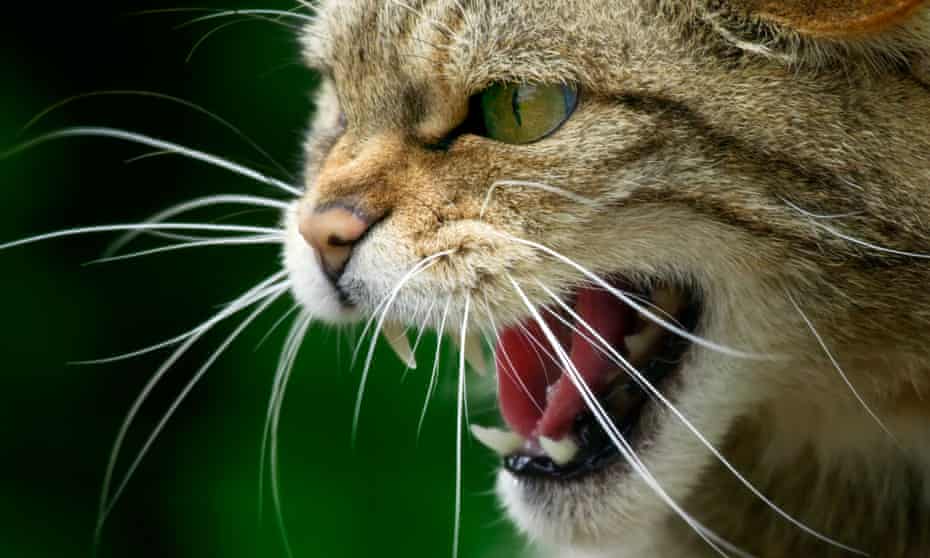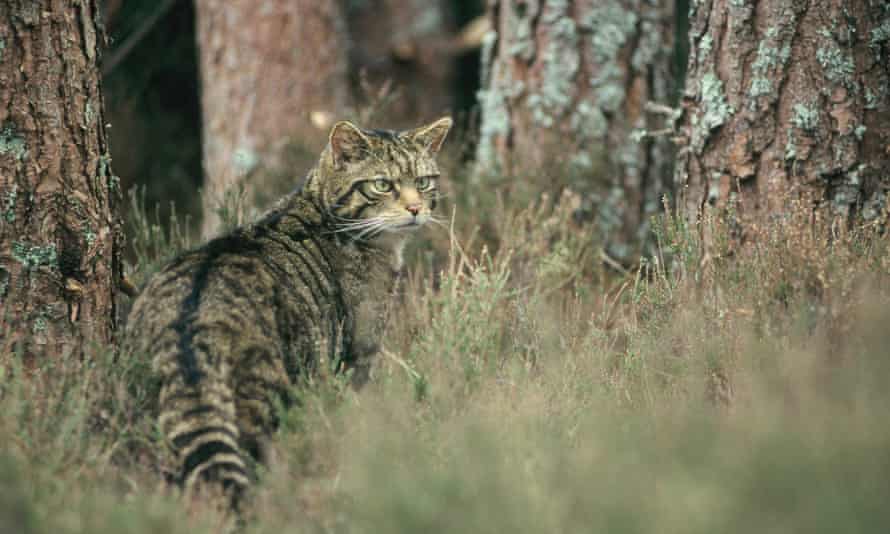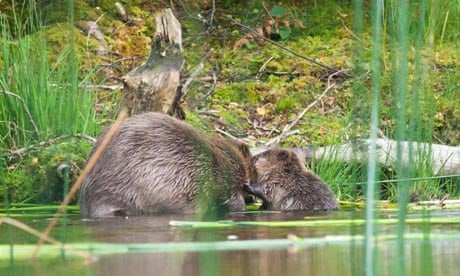To begin with here is a quote from The
Smithsonian Magazine by Nora McGreevy titled "Humans Wiped Out
Two-Thirds of the World’s Wildlife in 50 Years" (16th Sept. 2020)
https://www.smithsonianmag.com/smart-news/humans-wiped-out-two-thirds-worlds-wildlife-50-years-180975824/
"Two major reports released this month paint a grim
portrait of the future for our planet’s wildlife. First, the Living Planet Report from the World
Wildlife Fund (WWF), published last week, found that in half a century, human
activity has decimated global wildlife populations by an average of 68 percent.
"The study analyzed population sizes of 4,392 monitored
species of mammals, fish, birds, reptiles, and amphibians from 1970 to 2016,
reports Karin Brulliard for the Washington Post. It
found that populations in Latin America and the Caribbean
fared the worst, with a staggering 94 percent decline in population. All told,
the drastic species decline tracked in this study “signal a fundamentally
broken relationship between humans and the natural world,” the WWF notes in
a release.
"The WWF report singles out habitat destruction caused
by humans as the main threat to the world’s biodiversity. For example,
freshwater mammal, bird, amphibian and reptile populations have declined by an
average of four percent each year since 1970.
“You begin to see a picture of an unraveling of nature. That
is alarming—and I think alarming, even by our own measures of alarming,” WWF
chief scientist Rebecca Shaw tells CNN’s Amy Woodyatt.
“… [W]e’re seeing very distinct declines in freshwater ecosystems, largely
because of the way we dam rivers and also because of the use of freshwater
resources for producing food to feed a growing population of people worldwide.”
"Then, on Tuesday, the United Nations published
its Global Biodiversity Outlook report,
assessing the progress—or lack thereof—of the 196 countries who signed onto
the Aichi Biodiversity Targets in 2010.
This ten year plan outlined ambitious goals to staunch the collapse of
biodiversity across the globe. Yet according to the U.N.’s report, the world
has collectively failed to reach a single one of those goals in the last
decade, reports Catrin Einhorn for the New York Times.
"The U.N. report did contain bright spots. For
instance, experts pointed to the efficacy of human-led conservation efforts,
such as a program in Pakistan
that protects snow leopards and a campaign to save the Japanese crested ibis
from extinction, reports Matthew Green for Reuters. Without
conservation efforts, the study estimates that the numbers of bird and mammal
extinctions would have been twice as high during the last decade."
You may now be wondering what this has to do with foxes and
wildcats in the UK?
Well, I know it comes as a shock to a lot of people raised on the myth that Britain, and
particularly the English, is "a nation of animal lovers".
Hunter-gatherers initially hunted for food and one animal could
provide a lot to a small family group. But then, at an undefined point in
history, humans decided that it was fun to hunt and kill for ‘fun’. Purely and
simply no longer living alongside nature but abusing it. It is claimed that
woodland and forests were cut down for agriculture and it certainly was but not
on the scale that was required. It is recorded in official sources and works
from the 10th century on that forestry was cut down or burnt down
simply to chase wolves out to kill.
When I read this initially I assumed it was simply
exaggeration or some political comment from the time. However, the more I read the more I realised
that what I had been taught was (apologies) pure bull-shit. Dogma taught from
once generation to the next and without exception the story was that packs of
wolves were attacking and wiping out livestock and killing those wolves was a
matter of survival. The historical accounts note that this lupicide was carried
out even if there were no “wolf problems” and in certain areas it was forbidden
to kill wolves as the local lord wanted some “for sport”. There was money in wolf-skins and remains
were simply dumped into “Wolf-pits” around the country.
Britons went on a kill frenzy. Hunt and kill bears and even
though it would have been obvious to them that bears were dying out locally so
they moved out to look for bears in other areas. Eventually the bears were
wiped out to such an extent that ‘sport’ and ‘entertainment’ moved over to bear
baiting. The same applied to wild boar and others. Eventually, town and village
folk had to wait until the fayre arrived and they could watch some
bull-baiting.
There is a lengthy chapter in The Red Paper 2022 looking at wolves but I think even naturalists
and zoologists will be surprised by some of what it reveals.
Foxes were considered not worthy of sport. That is until
wolves had been wiped out or were getting in low supply. We had three unique
island species of fox –just as the wolf in the British
Isles (which includes Ireland/Eire) was a unique island species;
the largest seems to have been almost coyote like and was known as the Mountain
or Greyhound fox. My colleague “LM” has gathered quite a collection of fox
“masks” (heads) and even some full body taxidermy (at least two of these are
historically important). From these we hope to convince a laboratory to one day
carry our DNA work on hair samples –work that we cannot sadly fund ourselves.
This type of fox became popular as, unlike the smaller
foxes, “it could give a good account of itself” –this is ‘sporting’ talk
meaning that it would stand its ground when cornered and fight back and that
does mean that hunt hounds would be wounded but they were essentially
unimportant as the kill was what gave the huntsmen their “jollies”.
Some of these foxes were trapped and transported around the
country and even to Ireland
which, oddly, later provided the English hunts with some mountain foxes.
The next type of fox was shorter than the first but, as was
the habit of people to name animals with certain characteristics of familiar
ones. This was called the Bulldog or Mastiff fox. Both myself and LM are
attempting to define a particular fox type characteristics and we are gradually
getting there on a subject no one has ever covered before. My personal belief
is that the term “Hill fox” may also have been applied to this type. Known as
living further down the hill/mountainside I think that the mastiff fox moved to
higher ground left vacant by the killing off of Mountain foxes. This is typical
behaviour since a fox or group of foxes killed in one area is soon replaced by
another (again, a topic discussed in The
Red Paper 2022) and for the mastiff fox higher and rougher terrain meant a
greater chance of survival.
The next for was the Common or Cur fox. Much smaller but
unlike the foxes we see today, these foxes appear to have always lived near to
human habitation and that is something we see with the New fox (European
imports to replenish the extirpated UK foxes) both in the UK and in Europe
where they replaced the Old European foxes.
I must point out that we are not talking about three
separate fox species. It seems that there are people who jump up and down
stating that this is what we are sating and interestingly this was what people
were declaring in the late 19th and early 20th
century. No one is
declaring we had three fox species because there is no DNA work on the matter
and “a fox is just a fox” was the prevailing official dictum. Nearly every naturalist or zoologist was a ‘sportsmen’ who
took notes but were overjoyed to kill anything and amass huge collection of
seals, birds, foxes, wildcats and…even the odd domestic cat or dog they had
shot. “A fox does this” or “a fox does that” is all we ‘learn’ Again, The
red Paper 2022 will cover this in more detail.
Needless-to-say, when you have bounties on foxes (adult and
cub) heads and ‘sport’ killing hundreds of foxes each year in some areas until
they ceased to exist you had one proud faction happy to have “done their duty”
(for money) and taken part in what was officially termed and promoted as
“vulpicide”. The second faction were the
‘sportsmen’ who claimed they were doing nothing more than having fun and there
seems to have been a deep hatred of those digging out foxes for money.
Humans wiped out unique foxes and wolves, boar and even deer
and hares were hunted to the point where they had to be imported from Europe to allow the ‘sport’ to continue.
I have not mentioned the badger. In fact the badger was
another whose head paid a bounty. In the Lakelands of Cumbria it was proudly
boasted that vulpicide had wiped out foxes and that what we can term “melecide”
did likewise for the badger. I have
looked at the subject of badgers privately and I still cannot understand how the species survived when so many
others did not. Badger baiting and some of its practices (that I will not
detail here as they are quite horrific) was ongoing from at least the Medieval
period and if this mass killing was going on from the Scottish Highlands to Cornwall just how did they survive?
Back in 1996 I suggested in an article that badgers had also
been imported for sport but suspected that, as with foxes, the importation date
might be further back that the 1600s. Britain was certainly exporting badgers
to Ireland: Agri-Food and Biosciences Institute -Genetic evidence further
elucidates the history and extent of badger introduction from Great Britain
into Ireland (unfortunately published on 1st April, 2020) https://www.afbini.gov.uk/news/genetic-evidence-further-elucidates-history-and-extent-badger-introduction-great-britain
“…population genetic analyses have revealed
that badgers with ‘British’ genetic heritage are localised in north-eastern and
south-eastern counties in Ireland
and that human-aided import of badgers from Great Britain, around 700 years
ago, is the most probable explanation. Although anecdotal, it is notable that
humans from these same regions in Ireland
also exhibit genetic and genealogical links to Great
Britain, an observation thought to result from the
Plantations of Ireland
that occurred in the 13th and 16th centuries.”
Once my work on the already mentioned book is finished and I
have also finished my wildcats book I intend to look into the history of
badgers in the UK and while
badgers were exported so were foxes and England also imported foxes so if
there is a “paper trail” I will find it. Badger baiting and hunting was part of
‘sport’ –it still continues illegally today with authorities seemingly
unwilling to fully investigate and prosecute.
The continuing vulpicide still continues with people happily
going out and shooting foxes every night around the country and where they are
no threat to livestock –the only reason a farmer is permitted to
kill them. Yet, weekly, the internet is full of photographs of foxes shot by ‘sportsmen’
and those killings are prosecutable under law as a fox in an empty field
hunting rabbits is not threatening livestock.
The press and media and all the liberals in the UK can preach about how many species humans are
killing off around the world but they turn a blind eye to the continuing
killing of species in the UK
and outdated policies of DEFRA. Of course, it is easier to have a cheese and
wine party discussing the “ghastly killing of rhinos” because it’s all very
exotic. What about the badger cubs killed brutally when only a few weeks old or
fox cubs shot for ‘fun’ a couple miles away?
In the UK
we have people who are not out of control fox feeding social media addicts but
who keep local foxes under observation and some have done so for 20 plus years.
If a fox is sick or injured they will treat or trap and get the animal treated
by a vet, usually at a wildlife rescue. Veterinary practices are supposed to
provide “First Vet” emergency care but it is not a legal
obligation.
Here is the basic fact and if you do not like it then you
can go and kiss your rear end: upwards of 80,000 foxes are killed each year in
the UK
through hunting, poisoning, snaring and car strike. I believe that the UK fox population is currently at a
crisis point and the population is far lower than various “guesstimates” put
forward. If it were not for the fox watchers treating problems such as mange
(which should be monitored), various injuries and rescuing fox cubs that are orphaned
then the foxes in the UK
would be beyond critical.
I will be naming and shaming vets that decide to refuse
wildlife first aid in future. Telling someone who has been asked by a rescue to
take it to a vet for emergency treatment to “Go put it back” is shameful. There
are good vets out there who care about wildlife but for the majority it is
about money and, as a couple told me, their lucrative “countryside clients”.
“Non interference with nature” may well sound good for some
staged TV documentaries or where a “tragic death” pulls in the punters but we
are talking about the real world. A world being ravaged by humans. A baby white
rhino is found weak and defenceless because its mother was killed do the
wildlife organisations walk away and leave it saying “let nature take its
course”? No. They help the baby rhino
recuperate and get it ready for release in a protected area so that the species
can survive because the rhino was in
that situation because of other humans. Those people are protecting their
native species under threat.
As far as I see it after 45 years of research and
investigation that is exactly what fox watchers and rescues are doing. However, they are doing so under severe
financial pressure. Just two Face Book fox groups total over 30,000 members and
to that can be added thousands of others from other groups and many congratulate
and take advantage of free treatment from rescues. Imagine those people each
donating £5.00 that would be £150,000 toward rescues and their work. Obviously
not everyone can contribute as we are dealing with the real world but think of
the difference even a £1.00 donation will make rather than 150 social media
likes.
As an example I get told constantly that the Fox Deaths
Project (unique in the UK) is “vital” and “very important to continue” and yet
even requests for an old working freezer amongst naturalist groups in the City
of Bristol has gone un-responded to after a year. We lose a lot of foxes because
public buildings (such as where post mortems are carried out) close at weekends
and bank holidays etc. People get annoyed at me because I will not pick up a
dead fox even after I explain that we cannot store them (especially in summer).
Likewise the same comments regarding the British Fox Study
and its ongoing work which drains already depleted non existent funds!
There are no grants for any of this work and there are no
grants for wildlife rescues but people want all the work to be done for free.
That is not a sign of a “nation of animal lovers” more like a nation of social
media fans who just say “Let other people sort it –they will manage somehow”.
At this point I was to say THANK YOU if you do donate to rescues or help out in some
way because that helps save more than just foxes and badgers.
Until we can sort out our own native wildlife it is
posturing and posing to donate and jump onto a cause because it is in exotic Africa and there are lots of nice blue sky photographs.
If you do not want to help British wildlife then get off the planet.
Hypocrisy is being at home holding a glass of wine or sat watching
The Blue Planet on TV and saying "how dreadful".














.jpg)